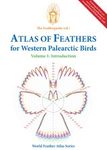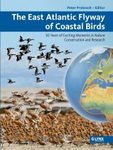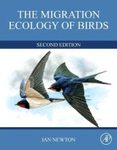About this book
Acoustic Communication in Birds, Volume 1: Production, Perception and Design Features of Sounds presents the scientific study of bird vocalizations. This book discusses the relations between the physical structure of bird vocalization and their quality as perceived by the recipient. Organized into nine chapters, this volume begins with an overview of the first sound recording of bird sound. This text then outlines some of the complex processes and events between sound production and behavior response to sound. Other chapters consider the study of neural control of vocalizations in birds. This book discusses as well the acoustic information transmitted through the wide range of habitats plays a crucial role in different avian behaviors, including individual and species recognition, territorial defense, mate selection, and song learning. The final chapter deals with a more detailed functional interpretation of a particular sound. Acoustic Communication in Birds, Volume 1: Production, Perception and Design Features of Sounds is a valuable resource for ornithologists, ethologists, and research workers.
Contents
Contributors
Foreword
Preface
Note on Taxonomy
Introduction
1 Factors to Consider in Recording Avian Sounds
I. Introduction
II. Terminology
III. Microphones
IV. The Tape Recorder
V. The Magnetic Tape
VI. Signal Monitoring and Modification
VII. The Recording System
References
2 The Structural Basis of Voice Production and Its Relationship to Sound Characteristics
I. Introduction
II. The Syrinx
III. Innervation and Control of the Syringeal Muscles
IV. Respiratory Mechanics and Sound Production
V. Energy Coupling between Airstream and Syringeal Membranes
VI. Energy Content of Song
VII. Sound Modulations
VIII. Tracheal Resonance
IX. Modulations Produced by the Syrinx and Respiratory Muscles
X. Unsolved Problems
References
3 Neural Control of Passerine Song
I. Introduction
II. Recent Origins of the Study of the Neural Basis of Song
III. Current Status of Theoretical Issues on Neural Control of Song
References
4 Auditory Perception in Birds
I. Introduction
II. Basic Auditory Processes in Birds
III. Sensitivity to Changes in an Acoustic Signal
IV. Hearing in Noise
V. Hearing and Vocalizations
VI. Conclusion
References
5 Adaptations for Acoustic Communication in Birds: Sound Transmission and Signal Detection
I. Introduction
II. Information Transfer in Communication
III. Frequency-Dependent Attenuation
IV. Degradation of Acoustic Signals
V. Stratified Environments
VI. Other Considerations in Long-Range Communication
VII. Estimating a Signaler's Location
VIII. Short-Range Communication
IX. Detection and Recognition: Optimizing the Receiver's Performance
X. Conclusions
References
6 Grading, Discreteness, Redundancy, and Motivation-Structural Rules
I. Introduction
II. The Motivation-Structural Rules Model
III. Grading, Discreteness, and Redundancy
IV. Summary Remarks
References
7 The Coding of Species-Specific Characteristics in Bird Sounds
I. Introduction
II. Species-Specific Parameters
III. Population-Specific Characteristics
IV. Interspecific Discrimination
V. Conflicts with the Coding of Other Information
VI. The Programming of Species Specificity
References
8 Character and Variance Shift in Acoustic Signals of Birds
I. Introduction
II. Evolutionary Origins of Species Specificity
III. Concluding Comments
References
9 The Evolution of Bird Sounds in Relation to Mating and Spacing Behavior
I. Introduction
II. Contextual Correlations
III. Correlations with Different Mating and Spacing Systems
IV. Direct Effects on Males and Females
V. Sexual Selection and Bird Sounds
References
Taxonomic Index
Subject Index
Customer Reviews


































